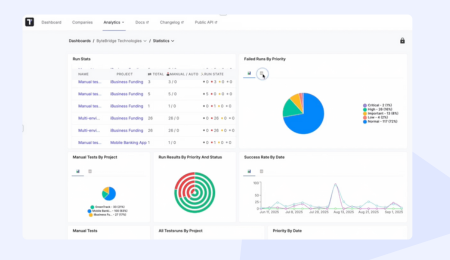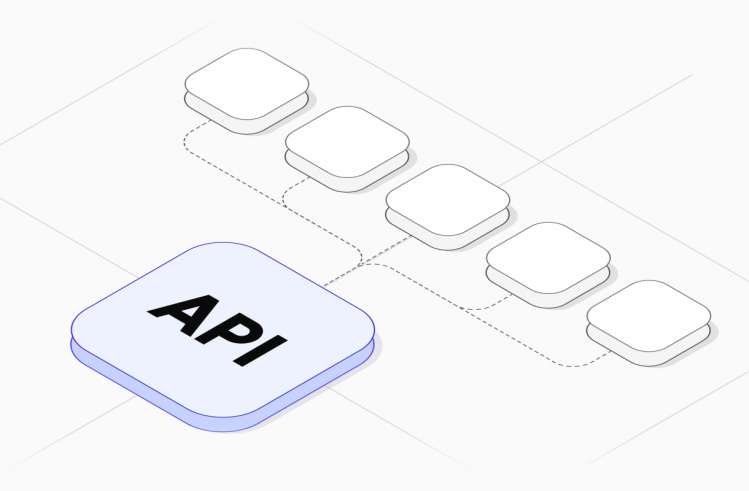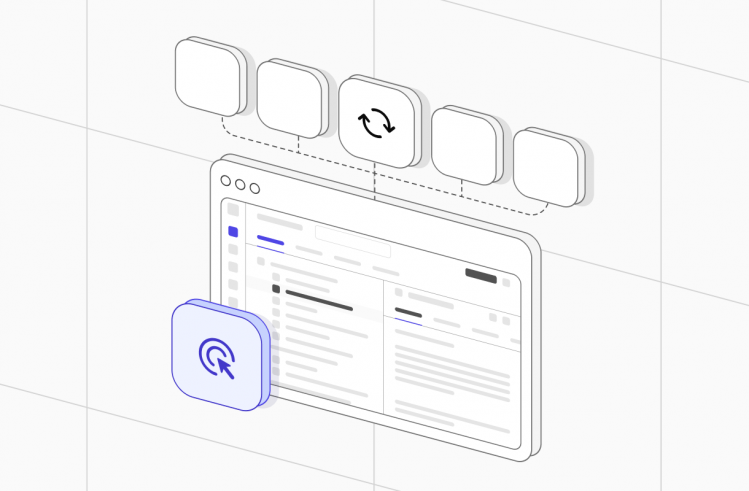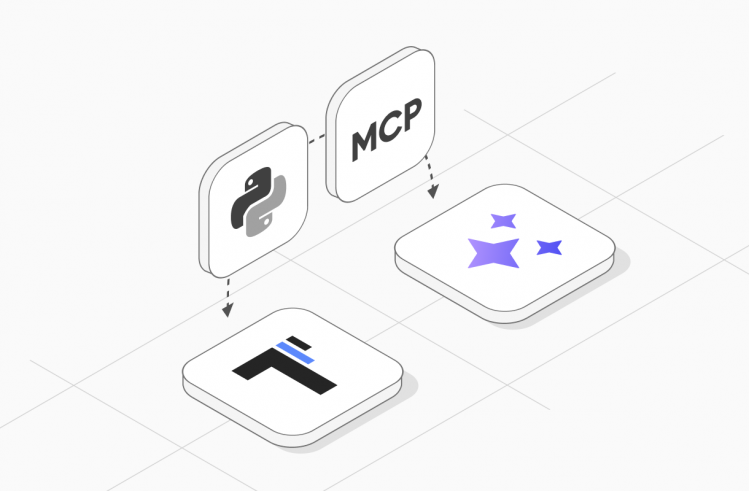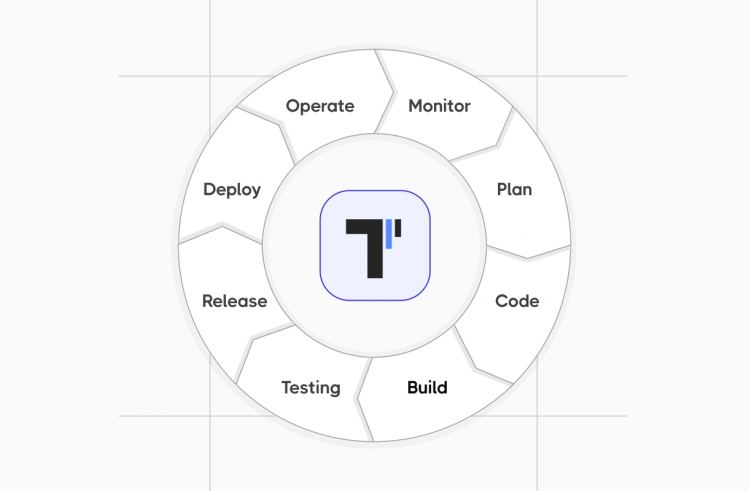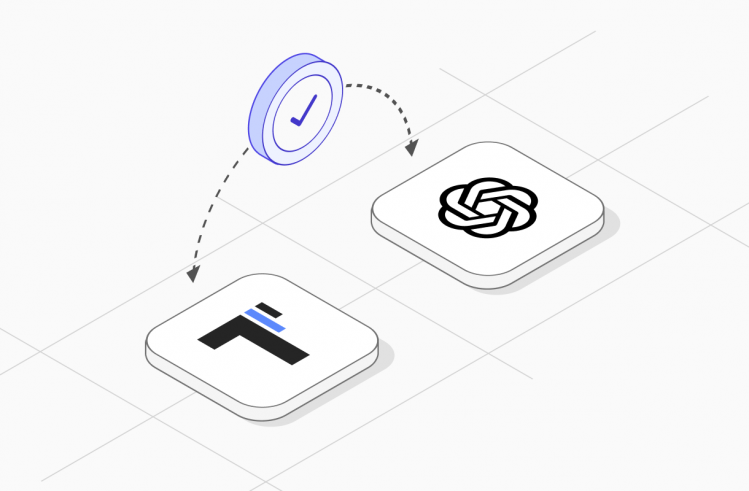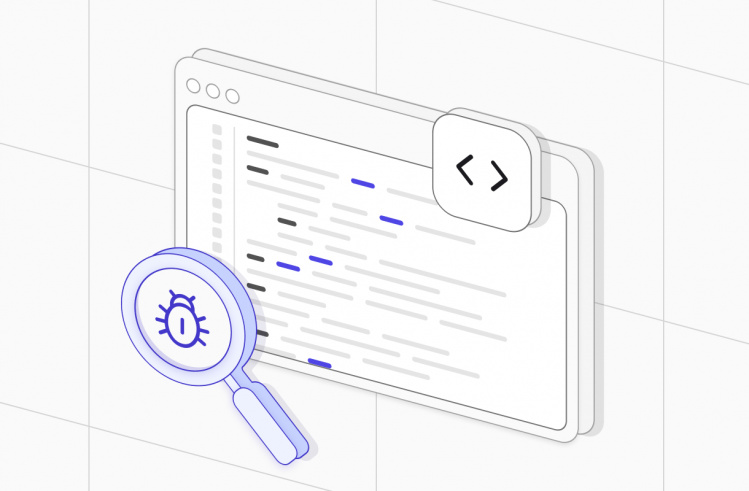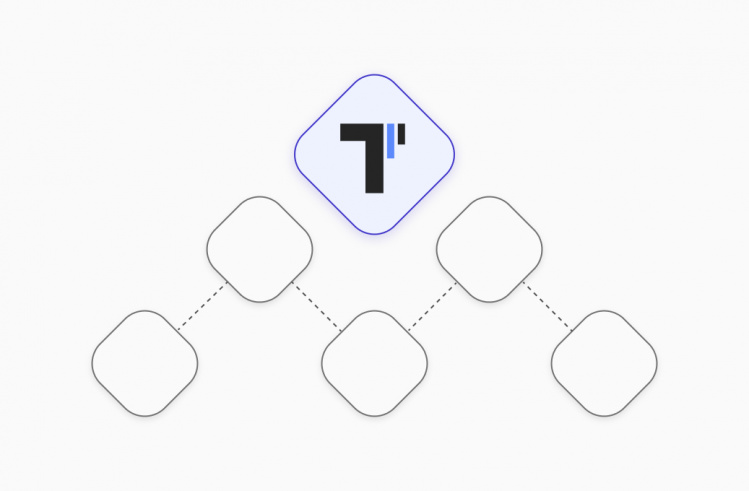QA automation with AI is no more a luxury, it is a need. As AI testing tools and automation AI tools continue to gain significant ground, software teams are implementing AI testing to enhance the precision and velocity of the testing process. By implementing AI within QA teams, the paradigm of software testing is improving.
Recent research shows that the share of organizations that use AI-based test automation tools as a part of the testing process. Moreover its usage has increased over the past year by more than a quarter, 72% compared to 55% previously. Such a rise emphasizes the importance of the AI-based test automation tools. AI enhances everything from test creation and test execution to regression testing and test maintenance.
This article will examine the top 15 best AI tools for QA automation, and examine their features, benefits and actual use cases. We will also explore the specifics of these best AI automation tools in detail so you can know which ones are most suitable to your team.
The Role of AI in QA Automation
It is not a secret that AI for QA is significant. However, it is worth knowing why it is so. AI in QA automation is transforming the way test management and test coverage are being addressed by teams.
✅ Speed and Efficiency in Test Creation and Execution
Among the most critical advantages of the AI test automation tools is the speed with which they will generate and run the test cases. Conventional test creation systems take place in labor-intensive, manual procedures that are error-prone and can overlook scenarios. Automating QA with generative AI and natural language processing, means that automation tools for QA can create test scripts within seconds based on user stories, Figma designs or even salesforce data.
✅ Enhanced Test Coverage and Reliability
AI testing tools such as Testomat.io will help to ensure tests are provided in all corners of the application. Using prior test data and employing the machine learning algorithms, AI automation testing tools are able to find edge cases and complex situations humans may not consider. This contributes towards improved test results and increased confidence over the software performance.
✅ Reduced Test Maintenance and Adaptability
The other b advantage of AI-based test automation tools is that they evolve when an application is changed. The idea of self-healing tests is revolutionary in regards to UI changes. Instead of manually updating test scripts each time, AI is used to test automation tooling to adjust tests to reflect changes, making them much easier to maintain.
Top 15 AI Tools for QA Automation
Let’s explore the best AI tools for QA automation that can help your team take the testing to the next level.
1. Testomat.io

Testomat.io is focused on the simplification of the whole process of testing and test automation. Set up, run, and analyze tests with AI on this test management platform.
Key Features:
- Generative AI for Test Creation: Rather than take hours micromanaging test script creation, Testomat.io uses it via user stories and architected designs. It is time-saving and accurate.
- AI-Powered Reporting: Once the tests are performed, the platform will provide you a clear, actionable report. Testomat.io can automate manual tests, you can also ask their agent to generate a piece of code\scripts to automate scenarios for the needed testing framework.
- Integration with CI/CD Pipelines: Testomat.io seamlessly integrates with CI/CD tools such as Jira, GitHub, GitLab, so it is a good choice of tool used by teams with preexisting CI/CD pipelines.
Why it works: Testomat.io removes the headache of test management. Automating the process of creating the test with AI will allow you to build and grow your automation inputs without being slowed down by manual processes. It is like having a teammate that does all the heavy tasks and freeing your team to concentrate on what is really important, creating quality software more quickly.
2. Playwright
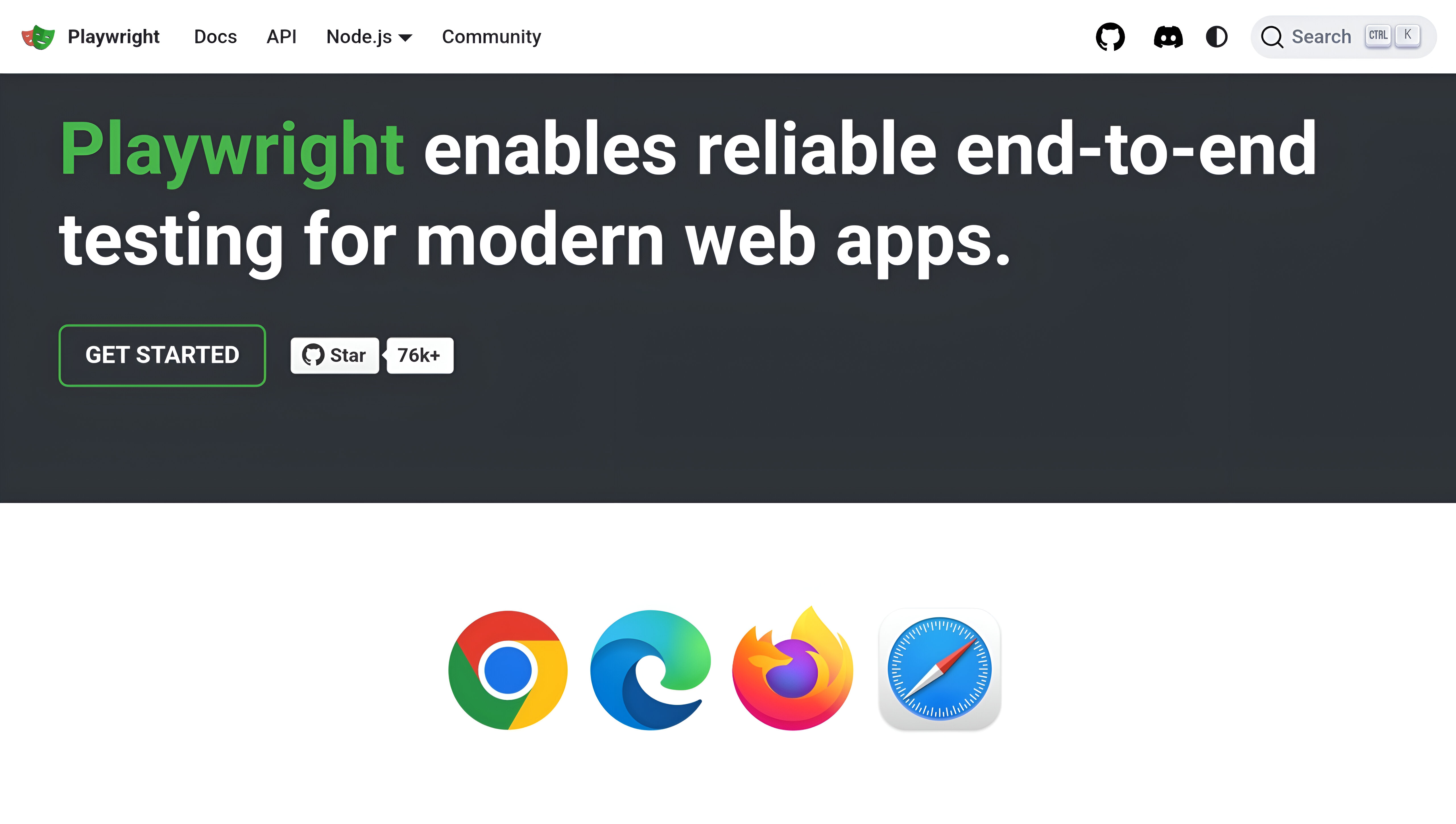
Playwright is an open-sourced automation testing tool to test web applications on all major browsers, as well as Playwright MCP.
Key Features:
- Cross-Browser Testing: Supports Chrome, Firefox, and WebKit to test your app across different modern platforms.
- Parallel Execution: Tests can be performed simultaneously on multiple browsers instead of having to run each test individually, which saves time.
- AI Test Optimization: Possible only with third-party solutions. AI helps the Playwright to prioritize the tests based on the history of the past tests.
Why it works: AI optimization and parallel execution allows your QA teams to test wider territories in shorter execution time and this is of utmost importance in the context of modern software development life-cycle.
3. Cypress
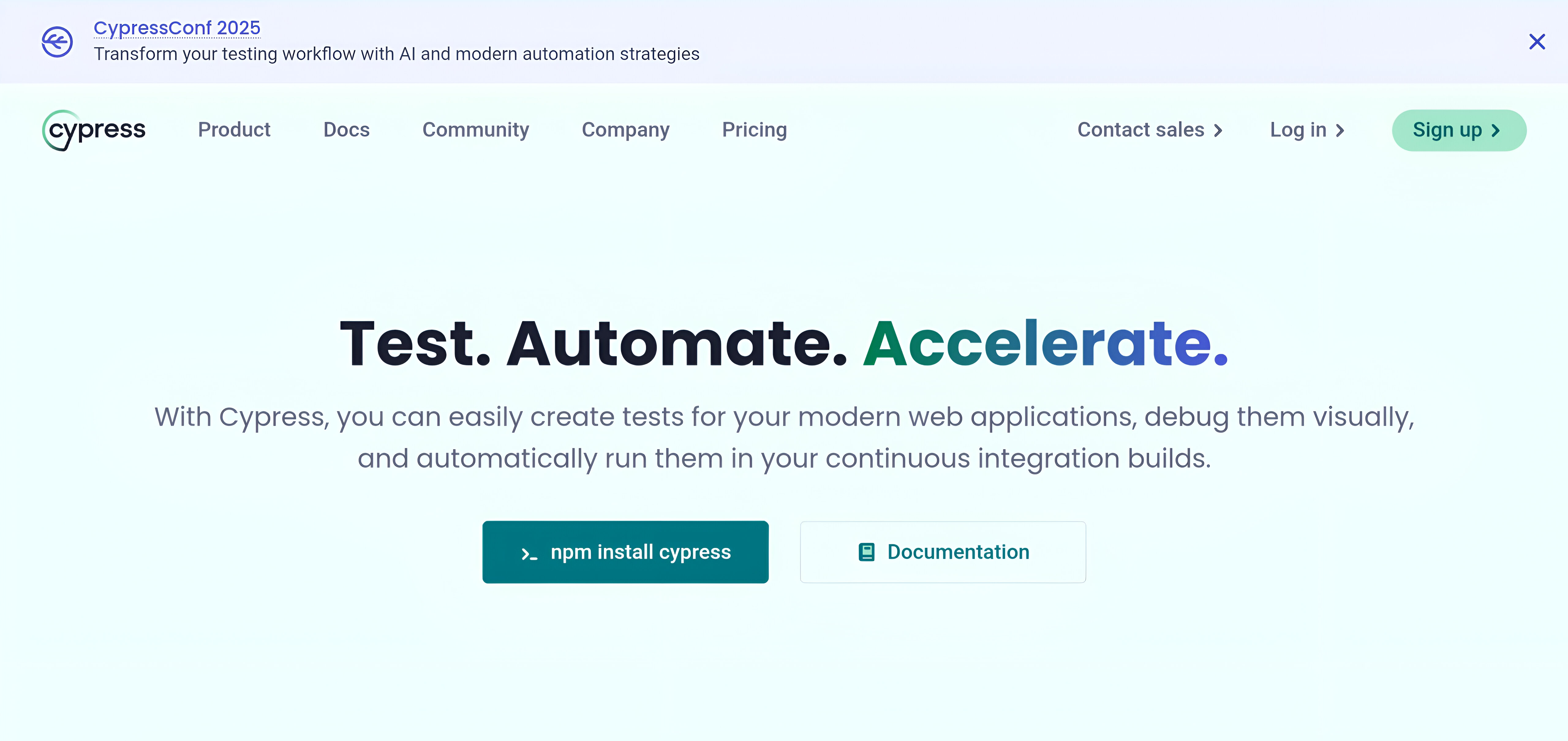
Cypress refers to an end-to-end testing framework that can be used to test web applications with the use of AI so as to provide immediate feedback.
Key Features:
- Instant Test Results: The results of tests are provided on-the-fly since it is JavsScript-based, so it is easy to setup.
- AI-Powered Test Selection: It selects the most pertinent test steps to run on the basis of the record of prior examinations.
- Real-Time Debugging: There is faster diagnosis to fix the problem.
Why It Works: By enabling teams to test fast and get real-time insight into the process, Cypress streamlines the testing process and improves the user experience by enabling teams to deliver reliable and bug-free software much quicker.
4. Healenium
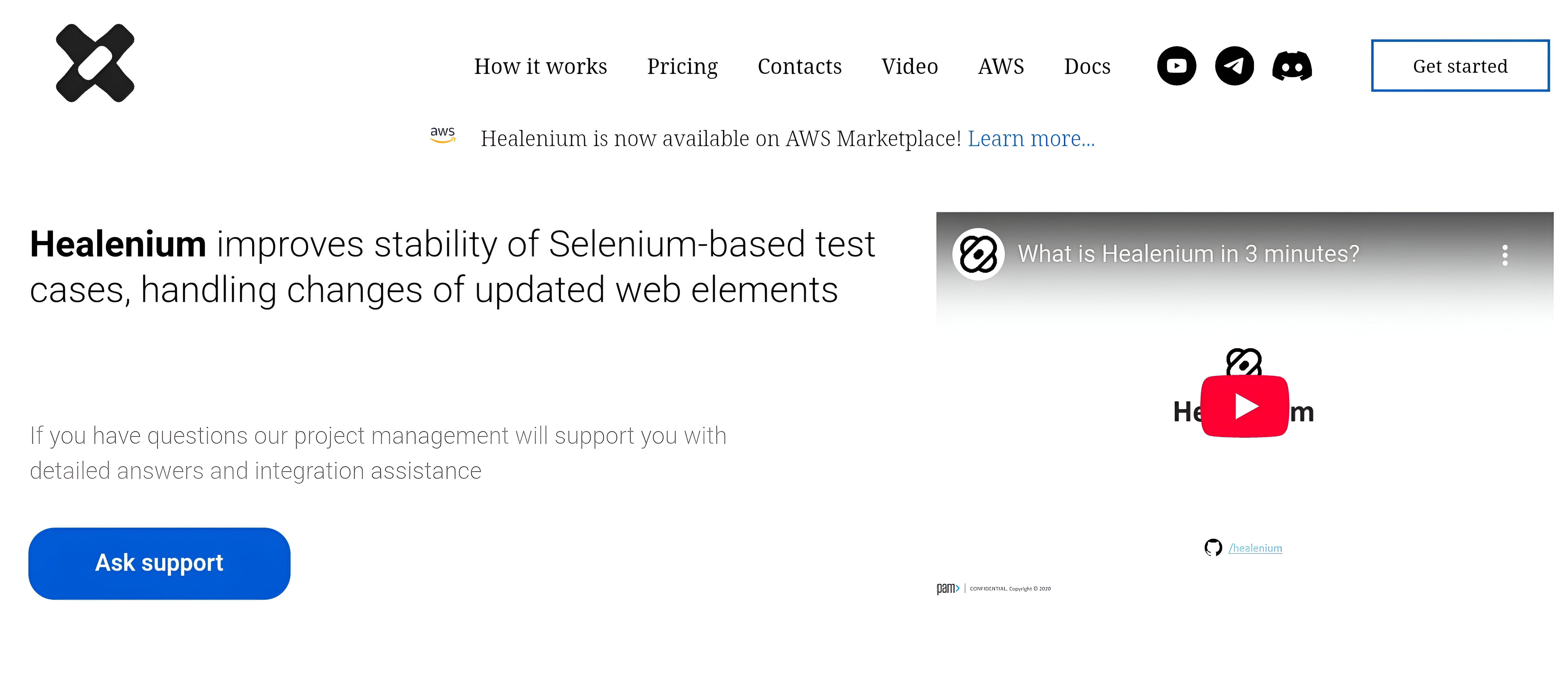
Healenium is a self-healing AI based tool which enables testing scripts to automatically adapt to changes initiated on the UI side, thus leading to adequate profoundness of regression testing.
Key Features:
- Self-Healing: Automatically fixes broken tests caused by UI changes.
- Cross-Platform Support: Works across both web applications and mobile applications.
- Regression Testing: Provides continuous, automated regression testing without manual intervention.
Why It Works: The self-healing capability of Healenium will free your QA engineers to not need to manually update test scripts when the UI changes. This saves on maintenance work and that your tests continue to be effective.
5. Postman
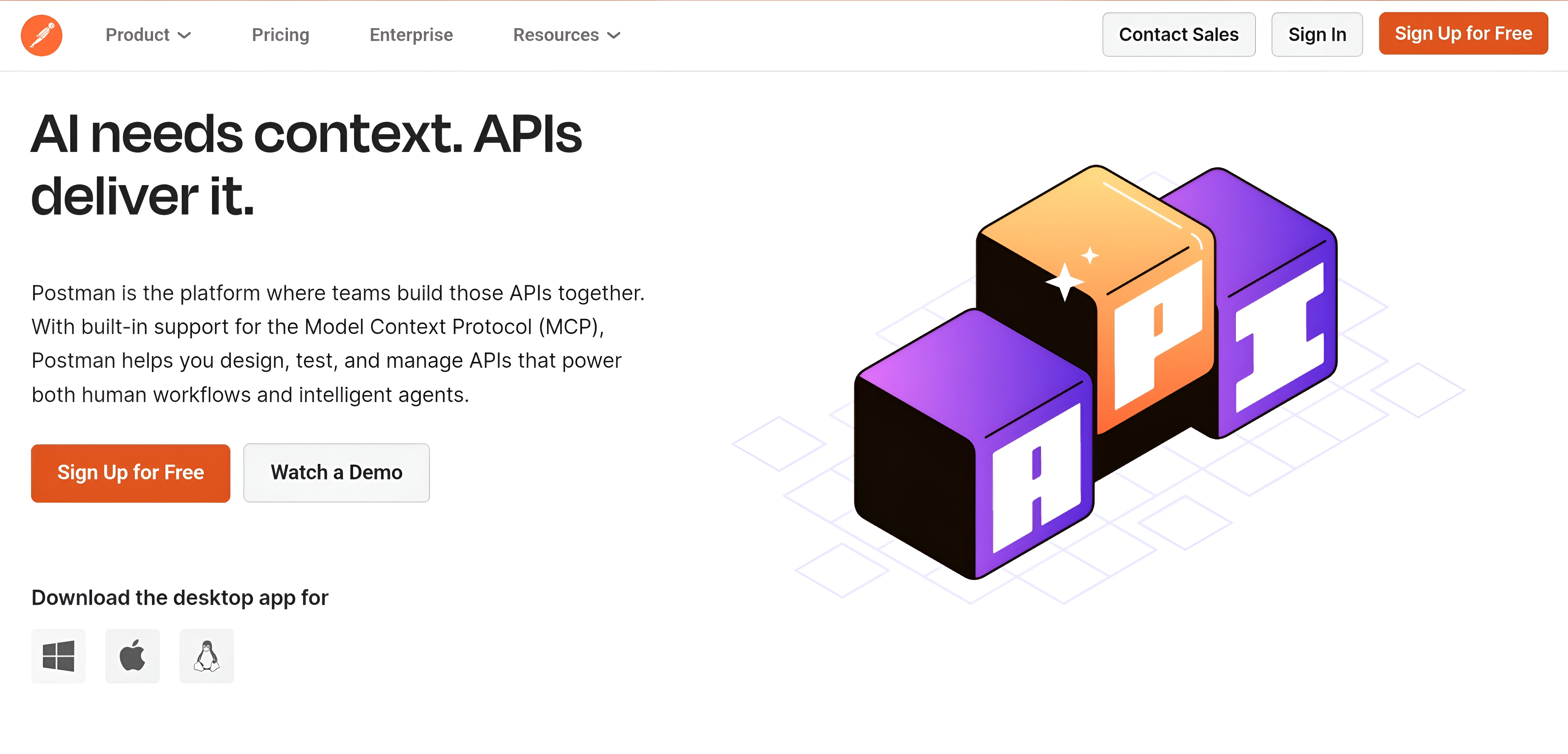
Postman is the most commonly used application in API testing and the tool employs AI to facilitate the process of testing and optimization.
Key Features:
- Smart Test Generation: Automatically creates API test scripts based on input data and API documentation.
- AI Test Optimization: Identifies performance bottlenecks in API responses and suggests improvements.
- Seamless CI/CD Integration: Integrates with CD pipelines to automate testing during continuous deployment.
Why It Works: The use of the Postman AI abilities enables working teams to test as well as optimize API performance with relative ease, as this login will guarantee faster, reliable services in the course of transitioning to production.
6. CodeceptJS
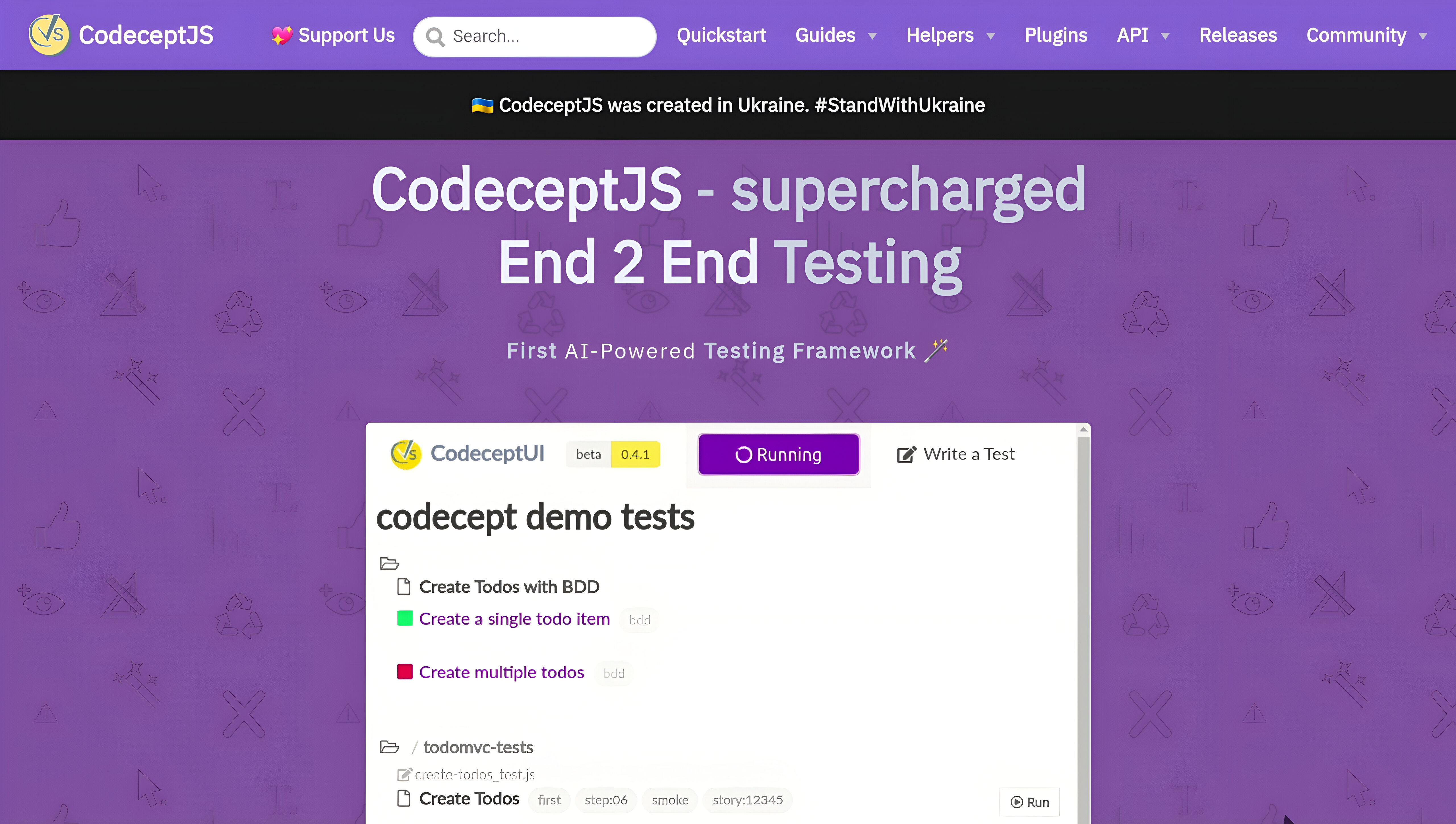
CodeceptJS is an end-to-end friendly testing framework that incorporates AI as well as behavior-driven testing to simplify end-to-end testing and make it effective. The solution is ideal to teams that need to simplify their test automation without forfeiting capacity.
Key Features:
- AI-Powered Assertions: AI enhances test assertions, making them more accurate and reliable, which improves the overall testing process.
- Cross-Platform Testing: Whether it’s a mobile application or a web application, CodeceptJS runs tests across all platforms, ensuring comprehensive test coverage with minimal manual work.
- Natural Language for Test Creation: With natural language processing, you can write test cases in plain English, making it easier for both QA teams and non-technical members to contribute.
Why It Works: CodeceptJS is flexible and fits into turbulent changes that occur in the software development processes. It can be incorporated with CI/CD pipelines easily, allowing your team to deploy tested features within the shortest time without being worried about broken code. It can be integrated with test management platforms as well, providing a complete picture of teamwide test efforts to teams.
7. Testsigma
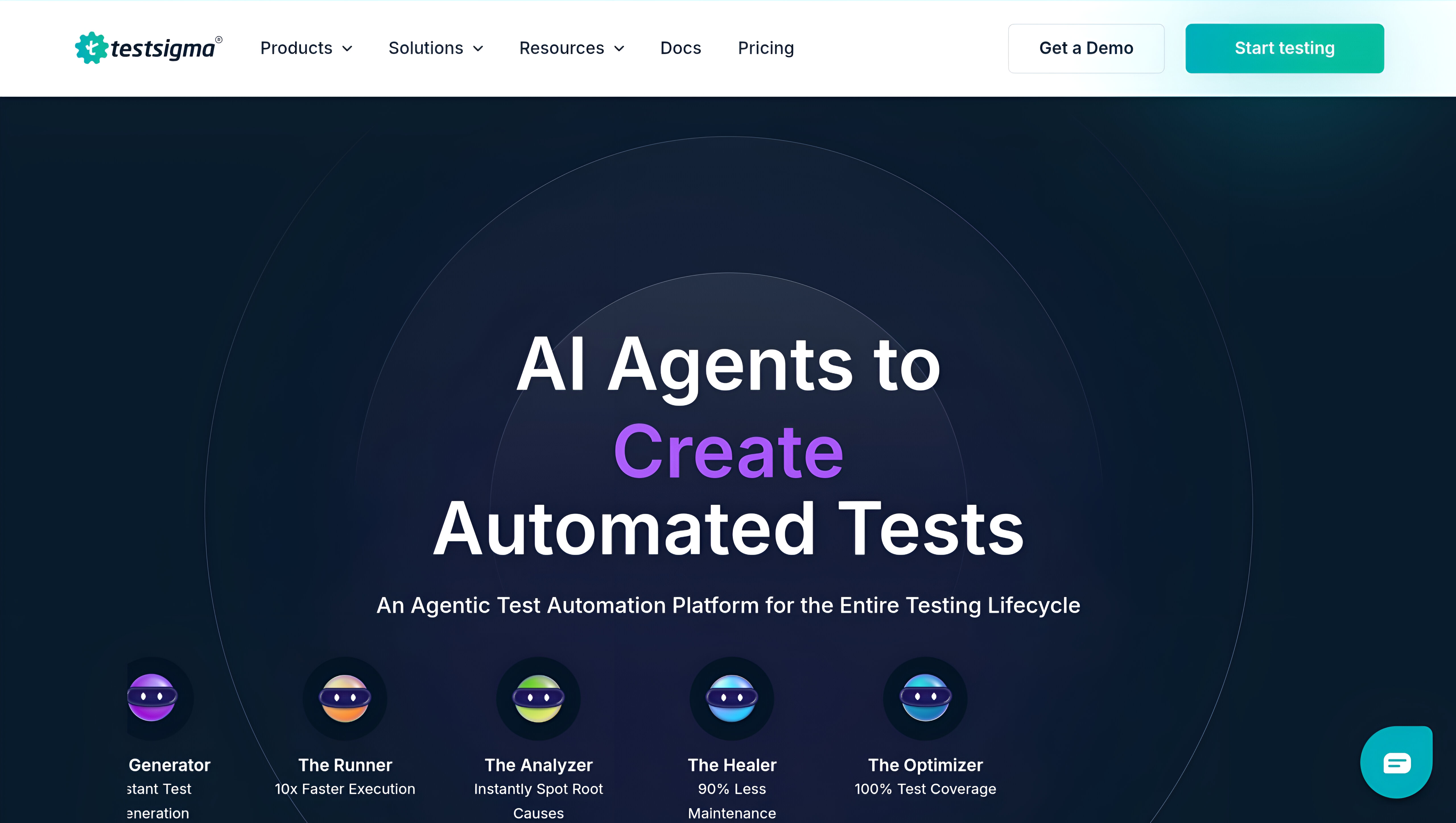
Testsigma is a no-code test automation platform that uses AI to help QA teams automate testing for web, mobile, and API applications.
Key Features:
- No-Code Test Creation: Build test cases by using an easy interface without writing any code.
- AI-Powered Test Execution: Efficiently executes test steps to complete test cases as fast as possible with greater accuracy.
- Auto-Healing Tests: Auto-adjusts tests to UI changes, and thus minimize maintenance work.
Why It Works: For less technical based teams, Testsigma would provide a simple methodology to enter the realm of automated testing with its artificial intelligence driven optimisations making sure that the test outcomes are excellent.
8. Appvance
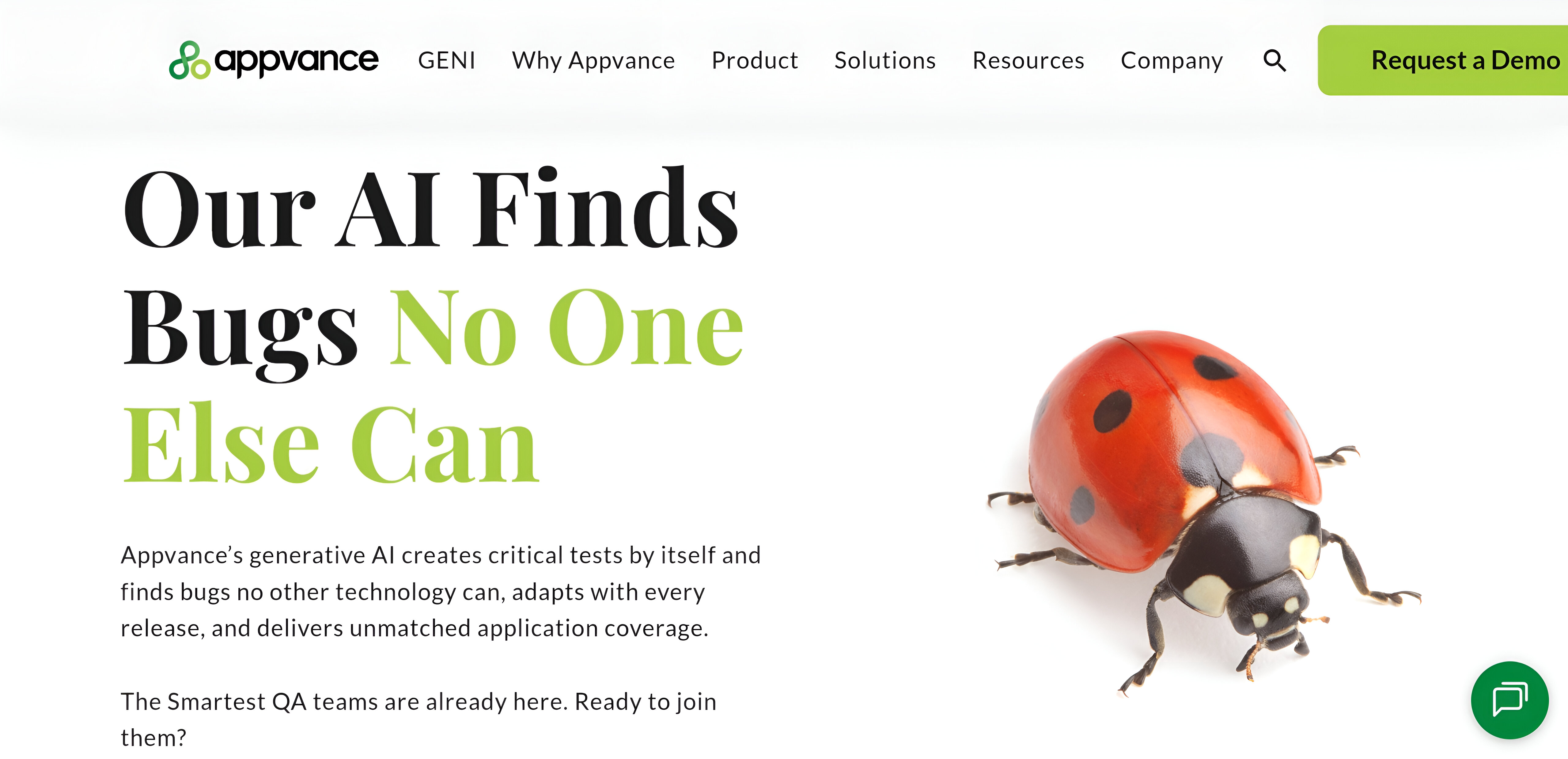
Appvance is an AI-powered test automation platform that facilitates the web, mobile, and API testing.
Key Features:
- Exploratory Testing: Utilizes AI to help discover paths through applications, and generate new test cases.
- AI Test Generation: Generates tests automatically depending on the past behavior on the application.
- Low-Code Interface: Has low-code interface so it is accessible to a variety of users, both technical and non-technical.
Why It Works: Exploratory testing with AI will uncover paths that may not be visible by humans who will do testing hence ensuring that the most complex of testing scenarios is covered.
9. BotGaug
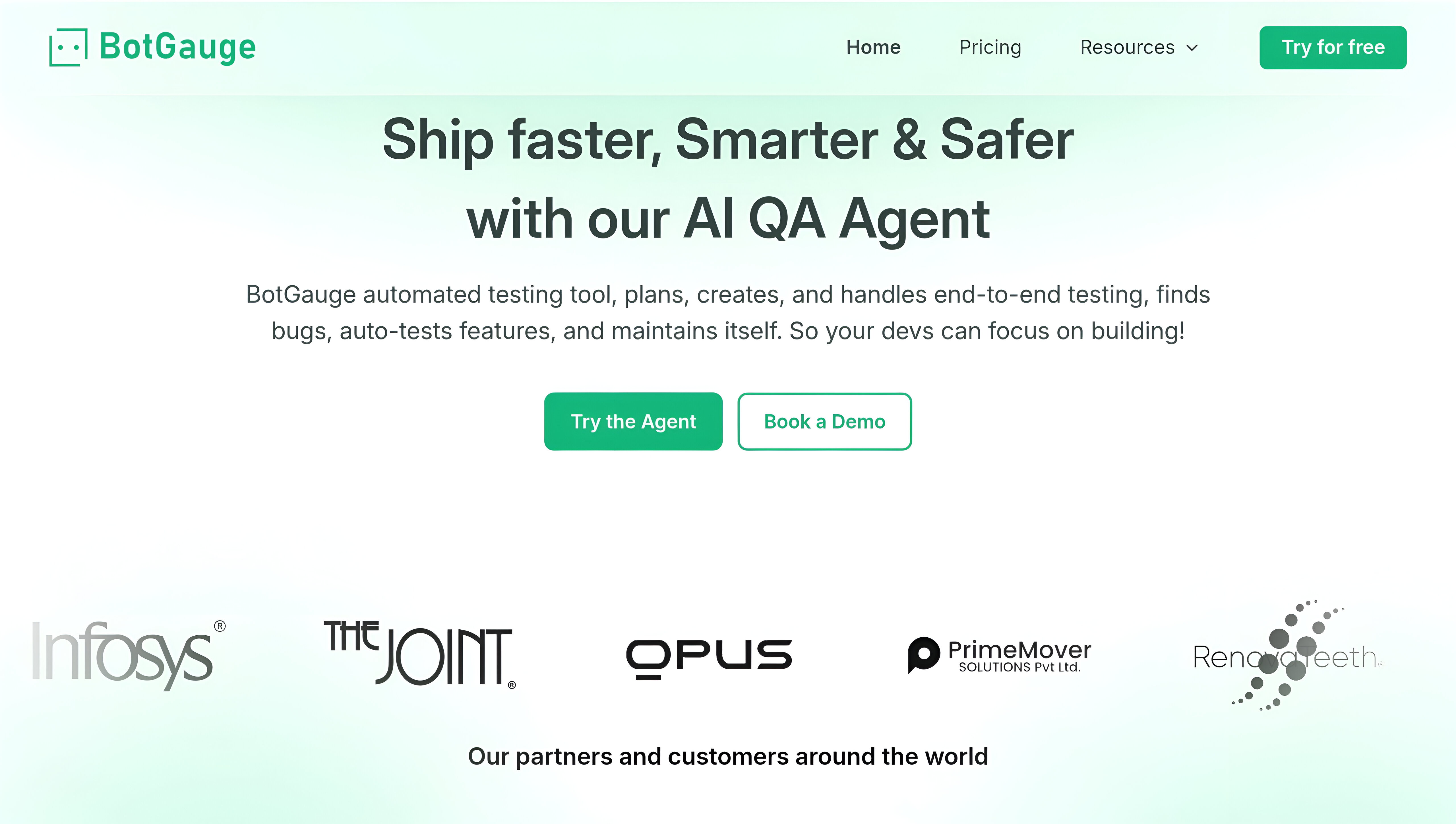
BotGauge is an AI-powered tool, geared towards functional and performance testing of bots, to ensure that they are not only functional, but behave well in any environment.
Key Features:
- Automated Test Generation: Creates functional test scripts for bots without manual effort.
- AI Performance Analysis: Analyzes bot interactions to identify performance bottlenecks and areas for improvement.
Why It Works: BotGauge simplifies bot testing, rendering it more efficient and accelerating the deployment. It has AI-driven analysis that makes the bots go to production with a minimum delay.
10. OpenText UFT One

The OpenText UFT One solution allows teams to develop front-end and back-end testing, accelerating the speed of testing with the use of AI based technology.
Key Features:
- Wide Testing Support: Covers API, end-to-end testing, SAP, and web testing.
- Object Recognition: Identifies application elements based on visual patterns rather than locators.
- Parallel Testing: Speeds up feedback and testing times by running tests in parallel across multiple platforms.
Why It Works: With automation of test maintenance and the elevated precision of AI, OpenText UFT One gets QA teams working more quickly without compromising quality. Its endorsement of cloud-based mobile testing promises scalability and reliability.
11. Mabl
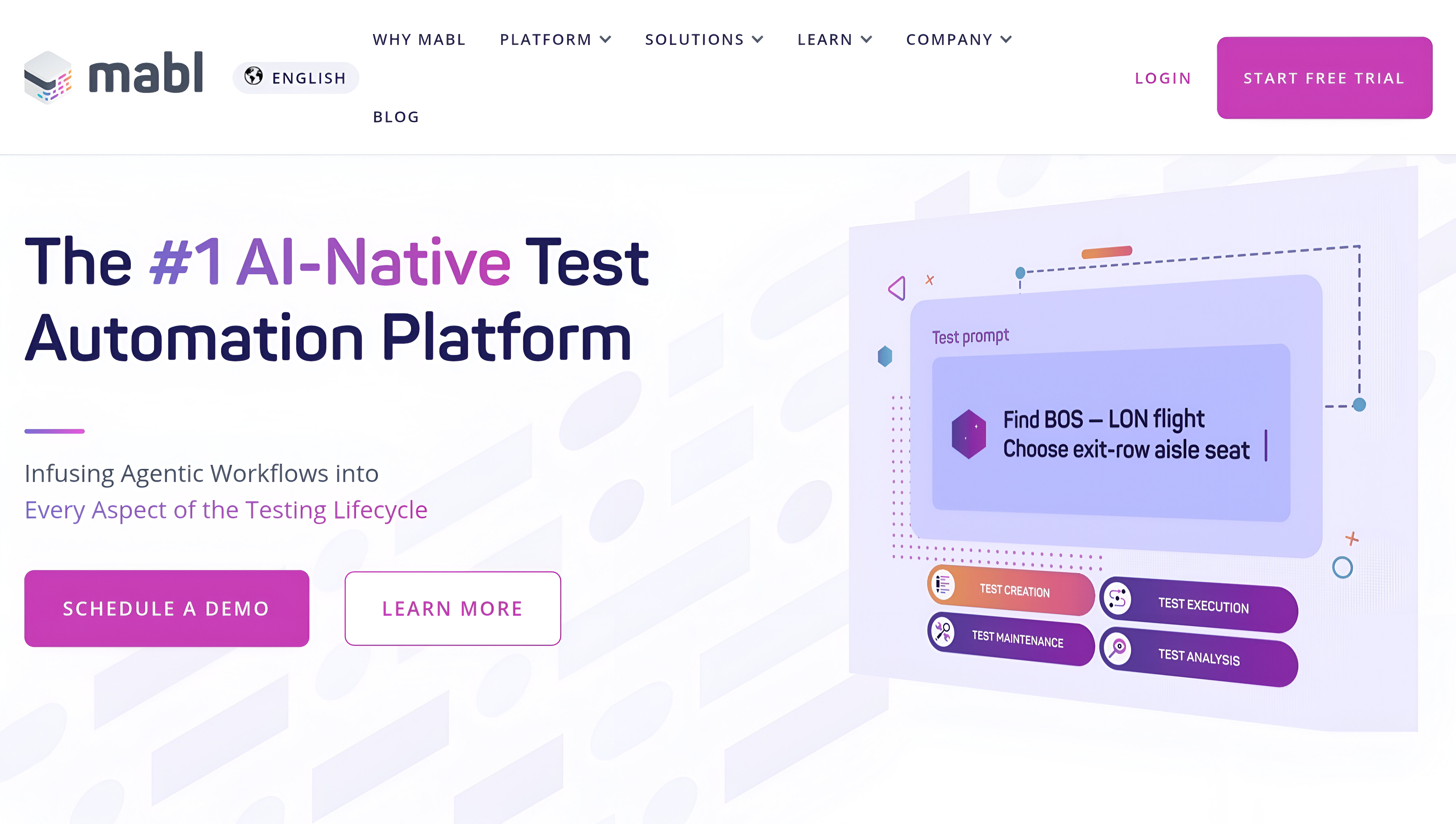
Mabl is an AI-powered end-to-end testing which makes it easy to use behavior-driven design to test.
Key Features:
- Behavior-Driven AI: Automatically generates test cases based on user behavior, reducing manual effort.
- Test Analytics: Provides AI insights to help optimize test strategies and improve overall test coverage.
Why It Works: Mabl removes the time and effort of testing by automating many of the repetitive elements in the testing process and infuses into existing CI/CD pipelines.
12. LambdaTest
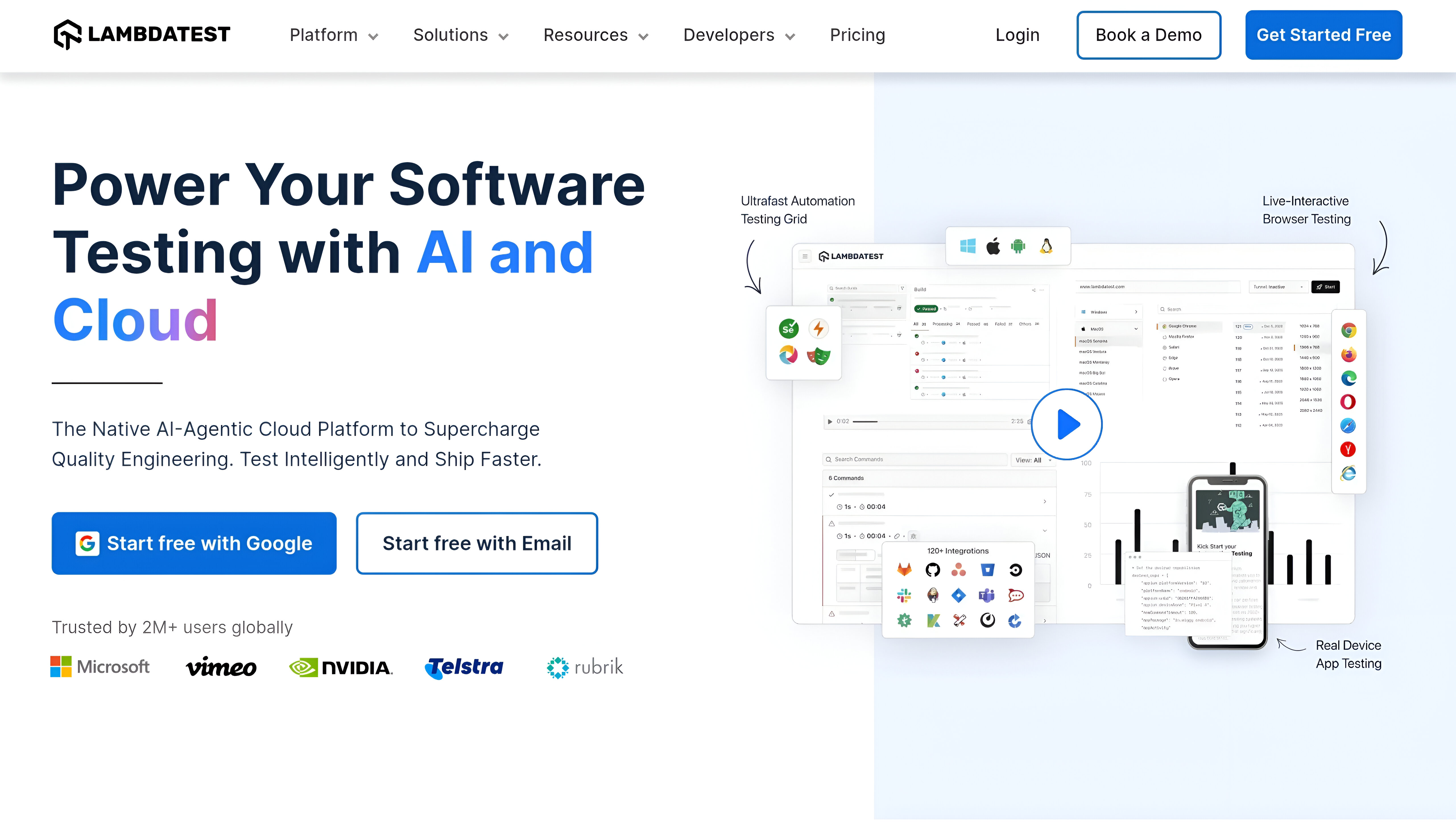
With increased efficiency, LambdaTest is an AI-driven cross-browser testing platform capable of running testing of web application across browsers in a much faster and accurate manner.
Key Features:
- Visual AI Testing: Finds and checks visual errors in several browsers and devices.
- Agent-to-Agent Testing: This facilitates testing of the web applications with AI agents that plan and execute more successfully.
Why It Works: LambdaTest allows QA teams to conduct multi-browser testing with greater ease, accuracy and quicker which results in detecting visual defects at the earliest. Its analyst-in-the-loop validation will result in a stable performance in diverse settings.
13. Katalon (StudioAssist)
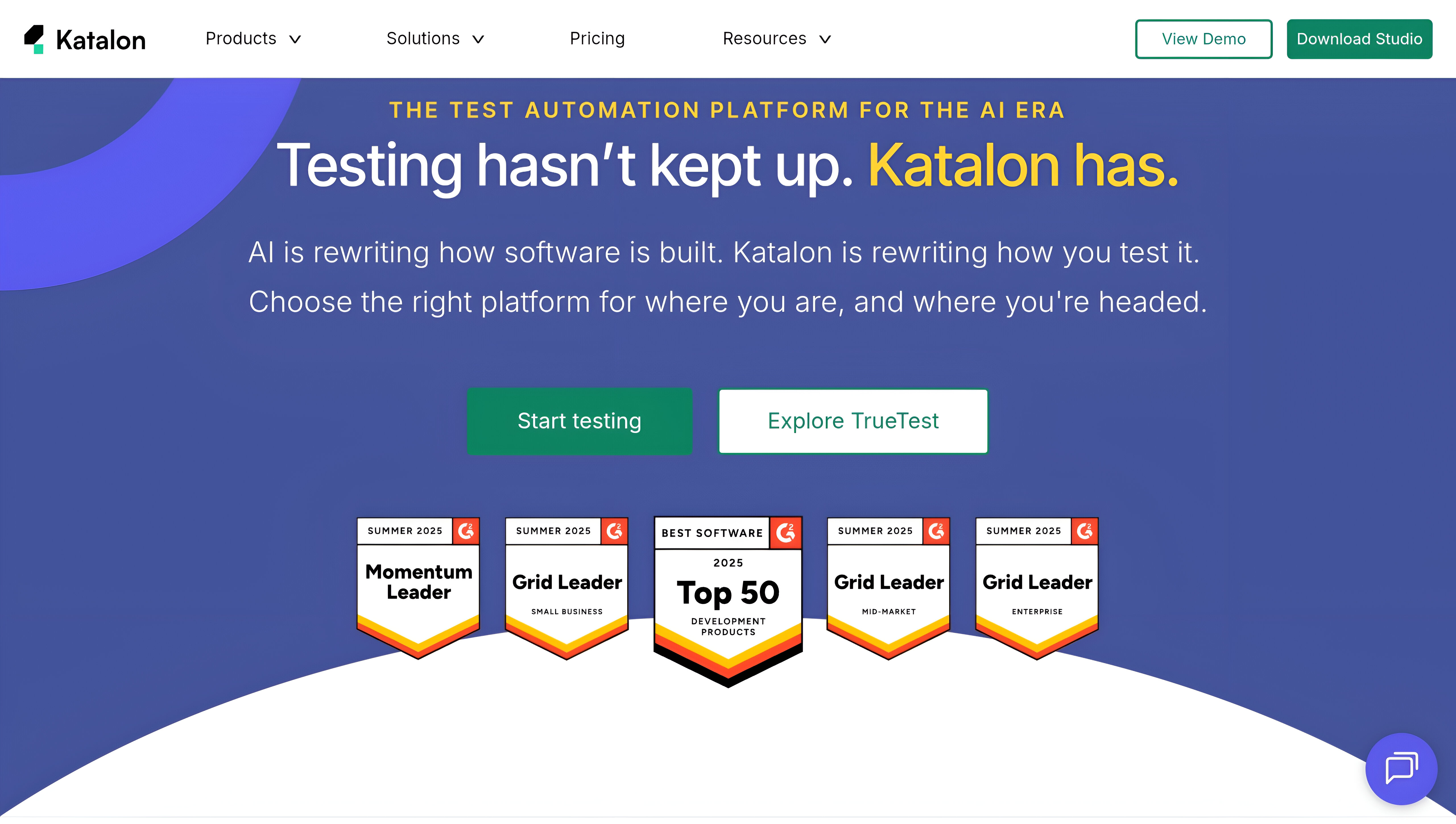
Katalon is a wide range of test automation tools that come with AI for faster and better testing.
Key Features:
- Smart Test Recorder: Automates test script creation, making it easier for QA teams to get started.
- AI-Powered Test Optimization: Suggests improvements to your test scripts, increasing test coverage and performance.
Why It Works: Katalon Studio speeds up the test development process and reduces manual workload that an engineer needs to accomplish by providing them with actionable feedback, thus making it a trusted tool between QA engineers and developers.
14. Applitools
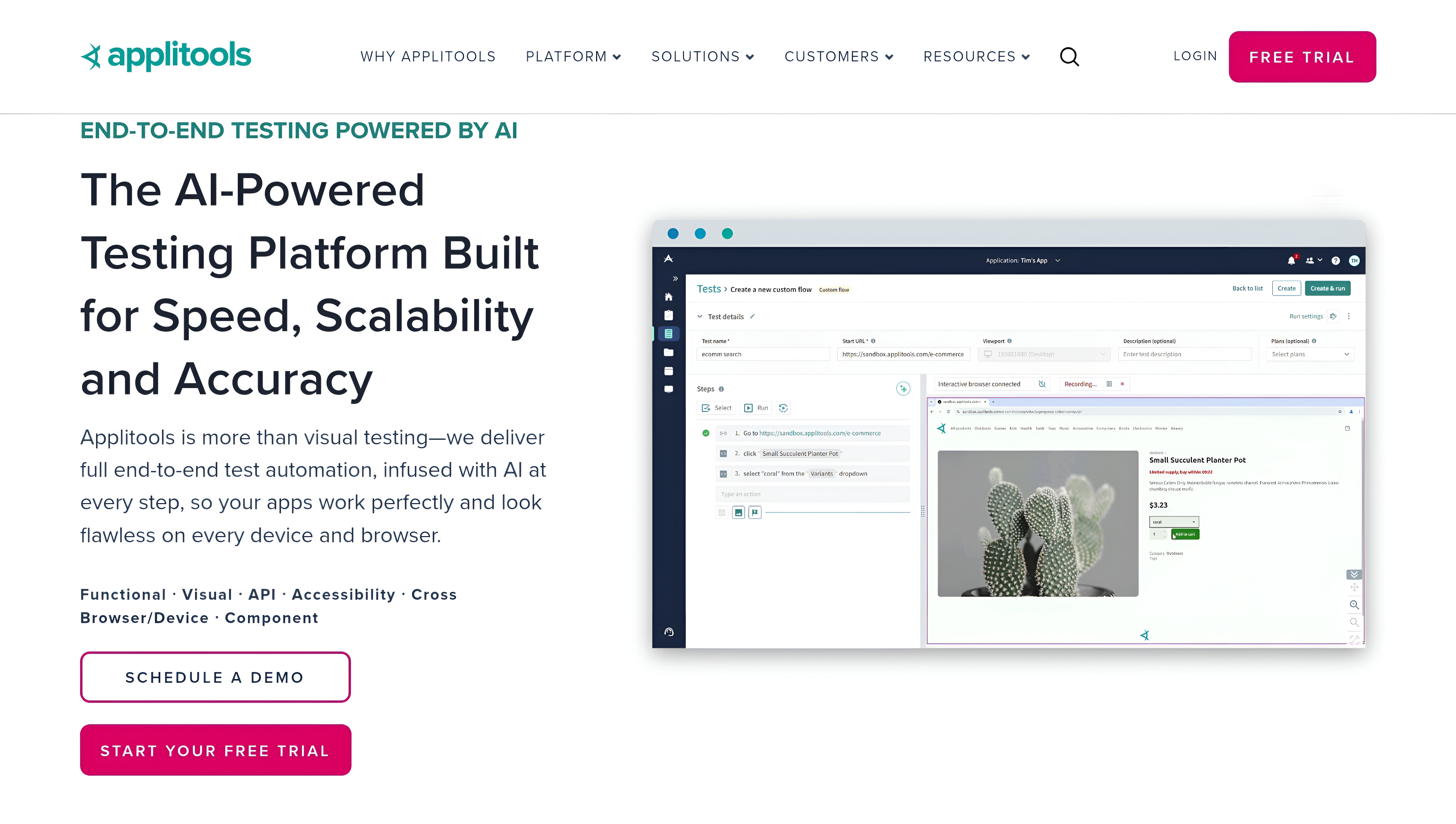
Applitools specializes in the visual AI testing, such as the UI domains, and whether the page could look and work as it should on the various platforms.
Key Features:
- Visual AI: Detects UI regressions and layout issues to ensure your app looks great across browsers and devices.
- Cross-Browser Testing: AI validates your app’s performance across multiple browsers and devices.
Why It Works: In increasing velocity, Applitools promotes UI testing through visual testing, which is an AI-powered tool to reveal visual defects at the beginning of the cycle. It is ideal when teams require UI test coverage.
15. Testim
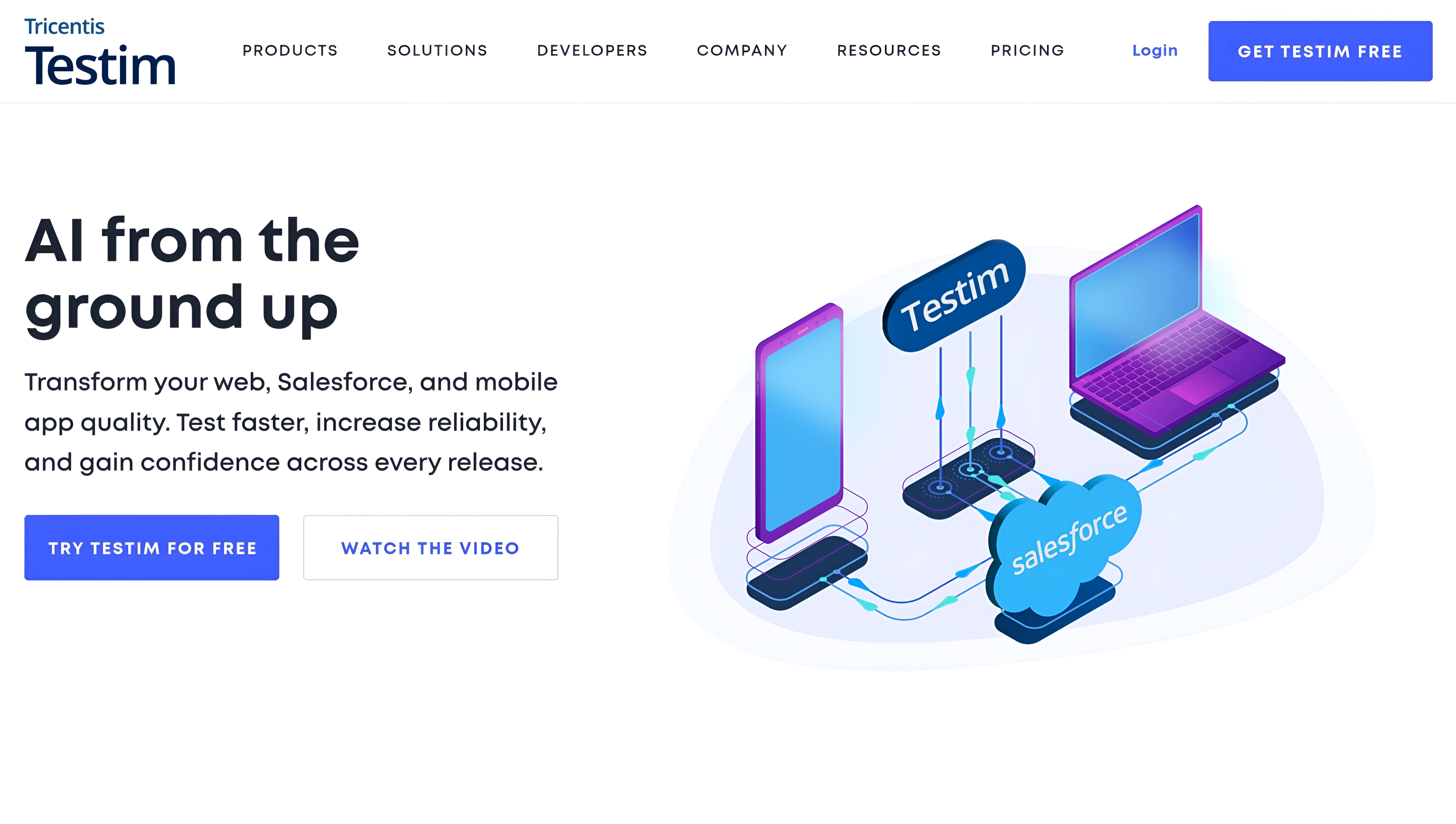
Testim is an AI-powered test automation platform to accelerate test development and execution of web, mobile and Salesforce tests.
Key Features:
- Self-Healing Tests: Automatically adjusts to UI changes, reducing the need for manual updates.
- Generative AI for Test Creation: Generates test scripts from user behavior, minimizing manual efforts.
Why It Works: Testim can automatically respond to change within the application, decreasing maintenance costs. The speed of test execution is accelerated by this AI-enabled flexibility, thus realization time of development cycles is also quick.
Top 15 AI Tools for QA Automation: Comparison
| Tool | Benefits | Cons | Why It Works |
| Testomat.io | AI-powered test creation
Streamlined test management and reporting Integrates seamlessly with CI/CD tools |
Primarily focused on test management, not testing execution
Limited to test management use |
Automates test creation and management, freeing teams from repetitive tasks and speeding up the testing process. |
| Playwright | Cross-browser testing (Chrome, Firefox, WebKit)
AI optimization for test prioritization Parallel execution for faster results |
Requires more setup compared to other tools
Steeper learning curve for beginners |
AI-powered test optimization and parallel execution make it fast and reliable for modern software testing. |
| Cypress | Instant test feedback
Real-time debugging AI-powered test selection and prioritization |
Primarily focused on web applicationsLess suited for non-web testing | Offers quick, actionable insights with AI to improve bug fixing and speed up test cycles. |
| Healenium | Self-healing AI adapts to UI changes
Cross-platform support (web and mobile) Automated regression testing |
May require fine-tuning for complex UI changes
Newer tool with limited documentation |
Self-healing capability ensures that testing continues without manual script updates, saving time. |
| Postman | AI-generated API test scripts
Optimizes API performance and identifies bottlenecks Seamless CI/CD integration |
Primarily focused on APIs, not full application testing
Can be complex for new users |
Makes API testing faster, more reliable, and optimized with AI-powered insights. |
| CodeceptJS | AI-powered assertions- Cross-platform testing
Natural language test creation for non-technical users |
Limited to specific frameworks (JavaScript-based) Requires integration for broader coverage | Natural language processing and AI-powered assertions simplify test creation and execution, speeding up deployment. |
| Testsigma | No-code interface for easy test creation
AI-driven test execution and optimizations Auto-healing tests for UI changes |
Less flexibility for advanced users
Might be limiting for highly technical teams |
Makes automation accessible for non-technical teams while ensuring high-quality test results with AI-driven execution. |
| Appvance | AI-powered exploratory testing
Low-code interface for ease of use Auto-generates test cases based on past behavior |
Limited AI capabilities for specific test scenarios
Steep learning curve for new users |
Exploratory testing helps cover edge cases, while low-code accessibility makes it user-friendly for various teams. |
| BotGauge | AI-driven functional and performance testing for bots
Analyzes bot interactions to identify bottlenecks Automates script creation |
Primarily suited for bot testing
Limited support for full application testing |
Specializes in testing bots, using AI to ensure they function well and are optimized for performance. |
| OpenText UFT One | Supports wide testing range (API, SAP, web)
Object recognition via visual patterns Parallel testing across multiple platforms |
Complex setup
High cost for smaller teams |
Speeds up test execution with parallel testing and AI-driven automation, improving both speed and accuracy. |
| Mabl | Behavior-driven AI automatically generates test cases
AI insights for optimizing test strategies Seamless CI/CD pipeline integration |
Primarily suited for web testing
Limited customizability for advanced scenarios |
Mabl removes repetitive tasks and makes testing smarter by automating most of the process and providing actionable feedback. |
| LambdaTest | AI-driven cross-browser testing
Visual AI identifies UI defects Speed and accuracy in browser testing |
Visual AI might miss minor UI changes
Limited support for non-web platforms |
Efficiently detects visual defects and ensures consistent UI across browsers and devices with AI help. |
| Katalon (StudioAssist) | Smart test recorder for automated script creation
AI-powered test optimization Wide compatibility with multiple platforms |
Some features are limited in the free version
Can be overwhelming for beginners |
Reduces the complexity of test creation with AI optimizations, speeding up test development and increasing reliability. |
| Applitools | Visual AI detects UI regressions
Cross-browser testing Identifies layout issues automatically |
Limited functionality outside of visual testingCan be costly for smaller teams | Focuses on visual testing, catching layout and design issues early in the cycle. |
| Testim | Self-healing tests adapt to UI changes
AI for generative test creation Accelerates execution with AI-driven flexibility |
Requires some technical knowledge
Can be costly for small teams |
Automatically adapts to UI changes, decreasing maintenance work and improving test speed, making development cycles faster. |
Conclusion
The future of AI in QA automation holds great potential as AI integration will continue to be an important part in test execution in software testing. Regardless of what you want to achieve – automate your regression testing, improve test coverage, or reduce test maintenance, AI-enhanced tools such as Testomat.io, Cypress, and Playwright can be a solution to the problem.
The best AI automation tools allow teams to test smarter, faster, and more reliably. As software development continues to accelerate, integrating AI-based test automation tools will help ensure that your applications are not only functional but also scalable and user-friendly. The time to embrace AI for QA is now.
